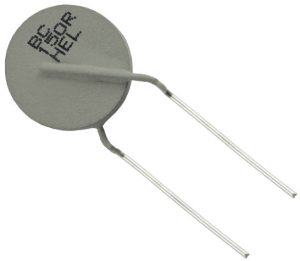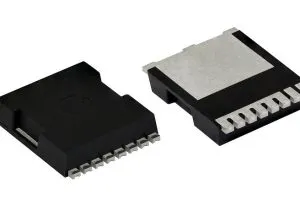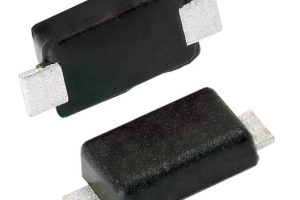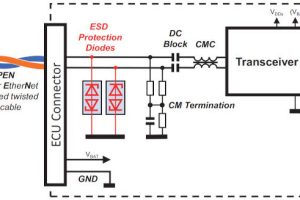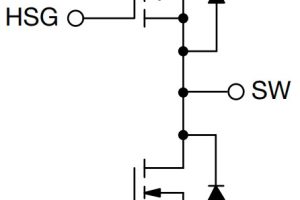Called PTCEL67R, they are through-hole disc devices, available with 25°C resistances (R25 values) from 150Ω to 1.5kΩ and handling up to 1.2kVdc.
They can handle 180J at 85°C and 130J at 105°C. Self-limiting is to between 160 and 170°C.
“With their high switching temperature and operation to +105°C, the series offers a heat capacity to 2.6J/K for all resistance values,” according to the company. “The devices withstand greater than >100,000 in-rush cycles and are resilient against non-switching peak power up to 25kW.”
Construction is a barium titanate ceramic pellet soldered between two tinned copper-clad steel wires, coated with a UL 94 V-0 compliant silicone lacquer. Qualification is to AEC-Q200.
Lead pitch is 10mm, with options of 5 or 7.5mm.
SPICE and 3D models are available.
PTC current limiting?
In current limiting, PTC thermistors are used as a form of self-protecting resistor.
As with purely resistive in-rush current limiting, they need to be shorted out with a contact or semiconductor switch after the in-rush period is over.
Also like resistors, their initial resistance needs to be high enough to limit current to the desired maximum at switch-on.
However, unlike resistors, their non-linear characteristic self-limits temperature rise, allowing physically smaller devices to be used in some circumstances.
NTC thermistor current limiting is simpler to implement as no shorting contact is required – one only needs to be placed in series with the input and it settles to a low-resistance hot state after limiting. But the less-non-linear temperature characteristic means a far smaller ambient temperature operating window for the NTC technique.
PTC thermistors can also be used to dump power connect them across a capacitor, for example, using a series switch. Here they have the same self-temperature-limiting characteristic as during in-rush limiting, and can be connected in parallel to increase power handling.
Vishay expects its PTCEL series to be used for over-load protection in ac-dc and dc-dc converters, with dc links, in battery management, and emergency discharge circuits.
Read more about the PTCEL High Energy series.
 Electronics Weekly
Electronics Weekly
